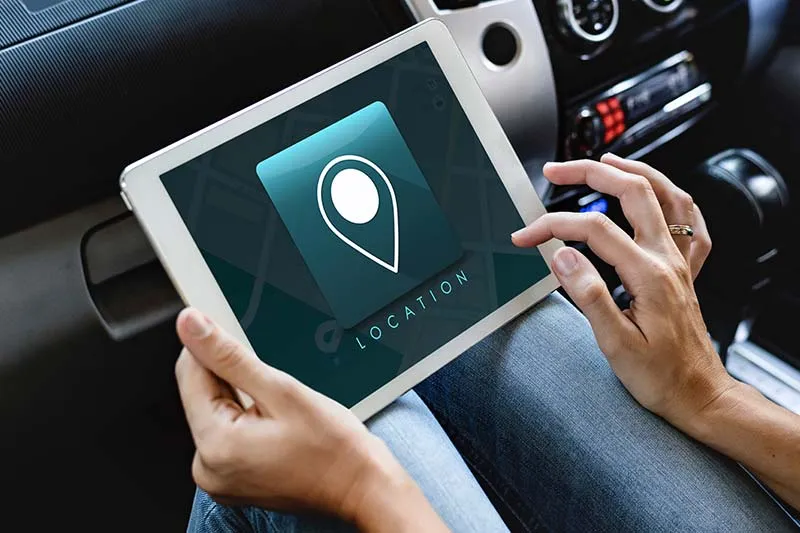Customer Journey: The Winning SaaS Strategy for 2019

The SaaS market is getting more and more crowded every year. If, on the one hand, a much larger amount of businesses is switching to cloud solutions, at the same time, the number of SaaS products is rapidly increasing.
The market is becoming extremely competitive even in sectors that seemed to present higher barriers to entry such as ML/AI, IoT, and the whole Industry 4.0 technological revolution.
To win the SaaS race in 2019, it’s necessary to adapt both your product and your strategy to align your solution with the new customer requirements and create a smooth customer experience.
One of the key aspects of a winning SaaS strategy in 2019 in both B2C and B2B sectors will be the ability to personalize the customer journey for each new user.
The level of customization and personalization you offer to your customers will be a decisive factor in the success of your SaaS business in 2019.
Customer journey personalization is an absolute must for 2019 in order to keep up with the competition. The fact of the matter is that users and customers expect this kind of high touch interaction when they engage with a new product.
And with all of the SaaS solutions available at your disposal, there really isn’t any reason left not to be able to provide the personalization your users demand.
Here are a few tips on how to quickly improve your SaaS strategy by personalizing the customer journey.

Table of Contents
1. Personalize the Customer Journey from the Beginning with Great Onboarding Emails
When a trial user signs up, it’s tempting to try to close the deal as soon as possible.
But the most important element of a conversion strategy is adding value first.
Your welcome message and the following emails should contain tons of valuable information. And not only…
Try to listen to your users. If you can’t follow each trial user personally with a very Check out our latest webinars, automate the process.
You can launch an in-product survey or you can send a link to a form via email specifically asking what the user wants to achieve with your product.
Based on the answers, you can trigger a specific drip campaign that incorporates articles, tutorials, webinars, and case studies that show your newly-acquired trial user how to make the best of your product and achieve all the results they expect to achieve!

2. Remind People of the Value You Provide Them With
You often hear the expression “never stop selling”. And that’s particularly true for a subscription-based business that relies on customer retention to thrive.
Use in-app messages or emails to remind your users what your product is doing for them.
Think of Zapier. They like to send you emails that show you how many tedious tasks they’ve been automating for you every month.
They use a particularly emotional language, underling the primary benefit of their product: automating boring micro-tasks that you would have had to perform yourself.
They keep reminding you of the fact that without Zapier you’d have to take care of thousands of transactions. And the message is very powerful!
The same holds true for marketing automation tools that provide you with monthly reports on how many opt-ins, leads, and emails have gone through.
Slack does the same with conversations, reminding you of how many emails you personally managed to dodge!
The only caveat: don’t overwhelm your customers with messages. Carry out some tests and find the sweet spot.
You want to remind people of how useful your product is for them, not in general. You don’t want to flood the inbox of your customers with generic emails. That’s the opposite of what personalization stands for.
3. Adopt a Data-driven Approach to Customize Your Customer Journey
Get to know your customers. Engage with them. Monitor their in-product behavior, and segment them on the basis of their individual needs. The more granular data you collect the better it is! Organizing, managing, and analyzing all of this data may seem overwhelming, but using a customer analytics platform to analyze your user behavior can help.
Collect as much data as you can about customers and product usage. Identify different tiers and use cases. Subdivide features based on the needs of each segment and create a product roadmap that takes into account different customers at different stages of their journey.
Start by selecting specific product metrics that count! Remove the noise by cleaning up all those vanity metrics that make your product team feel good ;).
Use a top-down approach by identifying areas which are creating issues for a specific user segment or for which users still lack powerful resources.
You can see that with in-product analytics, or by monitoring and categorizing ticket requests, finding health-score patterns in different customer segments and stages…

The idea is creating a matrix that takes into account customer segment, tier, stage, product functional areas, features, issue/request.
The aim: creating a more data-driven approach to bug fixes, product improvements, functional gaps analysis.
Combining this with a continuous dialogue with the users can also lead to a very structured feature request approach. Which leads me to the next point…
4. Work with Faster Feature Cycles by Involving Your Customers in the Process
Here’s the deal…select a small group of extremely loyal customers in different segments/tiers who truly love your product.
Let them become a part of your journey and feel part of a special elite who has early access to features!
Choose those customers you have a solid relationship with and who you constantly communicate with in frequent check-in calls…
When a new feature is ready, cut time with your internal iterations and roll out the new feat to these customers.
Collect feedback from them as fast as possible (knowing that if things go south, your relationship won’t suffer since your loyal customers know you and your product and understand the whole concept of beta).

If you have two versions of the same feature (different layout/design, slightly different functionality…) you can even A/B test options with two different groups of users.
The important thing here is knowing that the users are aware of what you’re doing. For many loyal customers it is flattering to know how important their opinion is and that their two cents can truly have a direct impact on your product!
5. Extend the Customer Journey by Personalizing Your Win-Back Strategy
Let’s be honest: it hurts when a trial user refuses to convert! The worst mistake you can do, though, is letting them go without asking why. It’s a first date without a second one. You need to know why this is, so that you can proactively address your next trial users and reduce churn!
As always, everything starts with the magic action that makes all things work: listening.
Don’t simply send a random generic mail in which you say how sorry you are that your user didn’t sign up for your product mentioning all the good things you could have done for them!
It’s kind of desperate. And a bit pathetic, if you ask me!
Even worse: don’t just reach out and offer discounts. Your pricing model should be value-based and fair. Period. If you offer your product for a lower price, the question is “why didn’t you offer it for that price from the very beginning?” Again: you may just sound pushy and needy.

First and foremost, listen to what your user is telling you. Send them a short survey or call them if you can. Find out what the problem is.
If the problem is connected to your product maturity, don’t just promise features. Contact them once you introduce new functionalities and show them how your product has improved.
If they didn’t have time to check all the features of your product (because you don’t have a proper in-app onboarding automation process with specific checklists) or achieve results, extend the trial period and guide them to success as soon as possible.
If the objection is pricing, you may have failed at showing them how valuable your solution is. Try again with more optimized content or, again, with onboarding automation.
If the problem is only that it’s not the right time for your user to commit, make sure you keep in touch with personalized content based on their specific needs and expectations.
6. Personalize Your SaaS UX When Users Set Up Their Working Environment
Customizing your working environment is the first important step to successfully use software.
Users need to be able to set up their dashboard, create integrations (if necessary), and often import data.
Try to create a smooth and personalized user experience by adopting a “done for you” strategy that immediately allows users to automatically set the stage for successful operations.
And if you’re dealing with enterprise customers…why not offer dashboard customization and data import as a service? Enterprise customers are pretty used to paying for such add-ons.
By taking care of it yourself you’ll also make sure that everything works perfectly and that you’ll be able to impress your customer with a great kick-off project!

7. Invest a Lot in Customer Success to Personalize the Customer Journey
Direct contact to other human beings who actually care is the quintessential form of personalization.
Your customer success team is the most important resource when it comes to establishing a valuable conversation with your users and turning first time users into loyal customers.
Your customer success team should be the impartial party that represents your customer’s interest when it comes to personalization, terms and conditions, specifications, features, and a lot more.
They’re the door customers can knock on to have a direct connection with your company and with your SaaS product.
Customer support is only involved when things go wrong, but investing in a solid proactive customer success program will help you personalize the customer experience and win over a lot more new customers.
8. Keep Conversations as Human As Possible Throughout the Entire Customer Journey
Chatbots and automation are precious tools for marketing, sales, and support.
However, it is also important to find the sweet spot between practical and personal in this case and ensure that users actually feel a true connection with your brand.
Some conversations and processes can be automated, but users need to rely on real human beings who are capable of fully understanding their needs when committing to a new solution.

Start by using real names in emails (instead of generic “info”, “sales” or “hello” email addresses). Show pictures and customize your messages even if you partially automate the process.
Customize your emails based on the in-product behavior of your users. Reward them for fully leveraging a key feature, or guide them when they haven’t discovered all the benefits of your SaaS.
9. Fully Personalize Your SaaS Onboarding Experience
You know how important it is to lead users to that very famous aha moment as fast as possible!
The sooner a new user realizes how valuable your product is, the easier it’ll be for them to fall in love with it. Time to value is the key metric when you need to optimize your user onboarding process.
Churn rate grows exponentially if users don’t accomplish all their onboarding tasks within the first 24 to 48 hours after signing up for a trial.
Interactive onscreen guidance helps you lead all your users to success automatically, making sure that they quickly accomplish all the tasks they need to achieve their first results right after signing up.

With interactive onscreen guides you can create onboarding tours, interactive walkthroughs, and product tours.
Different user segments, though, might need to be introduced to different features on the basis of their product usage and expectations.
Interactive guidance offers the opportunity to personalize the customer journey via Visit our blog.
This way, you can basically guide users by the hand through the discovery of your product as if you had the opportunity to guide each user individually.
Customer Journey Personalization Is the Key to Making Your SaaS Business Fit for 2019
There you go…
These are nine tips on how to personalize the SaaS customer journey in 2019 to make sure that your users will turn into loyal and happy customers.
As mentioned in the article, one of the key elements that will determine the success of your SaaS in 2019 is your onboarding process.
Personalizing your onboarding process right from the start increases the chances that the user will not only understand how to use your product quicker, but also enjoy using it as well!
Want to know more about improving and personalizing your onboarding process?

